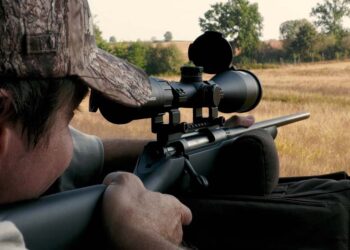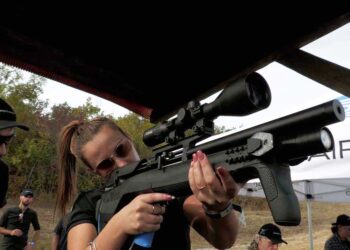 How to define and identify the diameter of weapons, rifles and shotguns. Technical definitions and practical examples to clarify a very controversial topic.
How to define and identify the diameter of weapons, rifles and shotguns. Technical definitions and practical examples to clarify a very controversial topic.
Perhaps not everyone knows that the caliber only specifies (as per its definition) "the internal diameter of a gun, measured in millimeters, centimeters or inches on the full lines of the rifling". Generally, on the contrary, we are often proposed to consider this measurement with the whole 'bullet', when it indicates only the internal diameter of the barrel of a firearm.
In fact, in common parlance, the caliber has become the measure commonly used in order to classify and identify the ammunition and weapons that chamber them, even if its value is not sufficient to identify the type of cartridge fired. At first glance, it may seem like a very simple parameter to define, in reality it is a very complex topic since several systems are needed to determine its classification.
In the definition of caliber we are used to implying many characteristic elements of the cartridge, of the weapon, of the manufacturer, etc. Thus we have for example the 8 × 57 Mauser, the .44 Remington Magnum, the .375 Holland & Holland Nitro Express. 
In most cases they include the diameter of the bullet and the length of the case, but they can include many other abbreviations such as that of the manufacturer, the weapon in which it was fired, the amount of black powder used for its loading and the weight in grains of the ball. In particular, the diameter of the ball is expressed in hundredths of an inch as in the case of 454 Casull and 40Smith & Wesson, or in millimeters as in the case of 9 × 21 Imi and 7.63 Mauser.
In some cases, there are in fact cartridges with a double denomination, defined in Europe in metric terms and in the Anglo-Saxon countries in hundredths of an inch. Examples of this category are the 380 Auto known in Europe as 9Corto and the 30 Luger, which becomes 7.65 Parabellum.
The length and shape of the case both contribute to the identification of the cartridge. In the 7.62 × 39 or 8 × 57 Mauser, 39 and 57 correspond to the length expressed in millimeters. We also find examples such as .45-70 where -70 is the amount of black powder expressed in grains that was originally needed for its loading.
In the case of smooth-bore rifles, in these weapons we find the calibers 10, 12, 16, 20, 24, 28 etc.
A rifle in cal. 12 has a barrel with a diameter greater than that of a rifle in cal. 28. In this case the caliber coincides with the number of bullets with a diameter equal to the internal diameter of the gun barrel that can be obtained with a pound of lead. The barrel of the shotgun in cal. 12, has an internal diameter of 18.53mm. From one pound of lead, it will then be possible to obtain 12 balls of that diameter.
 In rifled guns the problem of measuring the diameter of the barrel becomes difficult because it is necessary to establish whether it is measured between the solids, that is, between the ridges of the rifling, or between the voids. In this regard, it is customary to differentiate between drilling gauge or between solids and gauge between voids; usually, if it is specified, it is understood that the measurement concerns the drilling gauge and therefore the minimum dimension of the core. The caliber between solids is measured directly, on the contrary to measure the caliber between voids you choose to force a lead bullet through the barrel and then measure its maximum diameter with a micrometer.
In rifled guns the problem of measuring the diameter of the barrel becomes difficult because it is necessary to establish whether it is measured between the solids, that is, between the ridges of the rifling, or between the voids. In this regard, it is customary to differentiate between drilling gauge or between solids and gauge between voids; usually, if it is specified, it is understood that the measurement concerns the drilling gauge and therefore the minimum dimension of the core. The caliber between solids is measured directly, on the contrary to measure the caliber between voids you choose to force a lead bullet through the barrel and then measure its maximum diameter with a micrometer.
The difference between the two values is 0,20-0,35 mm in barrels intended for firing bullets with a hard jacket (steel, tombak) and 0,30-0,50 mm for barrels intended for lead or jacketed bullets thin copper. Half of this measured value indicates the depth of the rifling.
In addition to the official caliber name, the cartridge can be further specified by additional indications relating to the cartridge case (flanged, with or without collar, bottle, etc.) or the bullet (mantled, semi-mantled, soft-tipped, flat-tipped, wadcutter , etc.). The weight of the bullet does not become part of the identification of the caliber because it can vary.



 How to define and identify the diameter of weapons, rifles and shotguns. Technical definitions and practical examples to clarify a very controversial topic.
How to define and identify the diameter of weapons, rifles and shotguns. Technical definitions and practical examples to clarify a very controversial topic.































